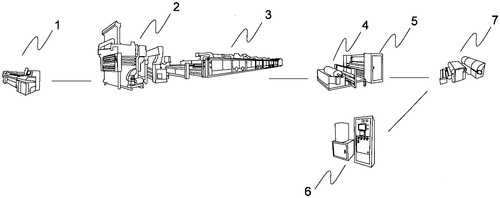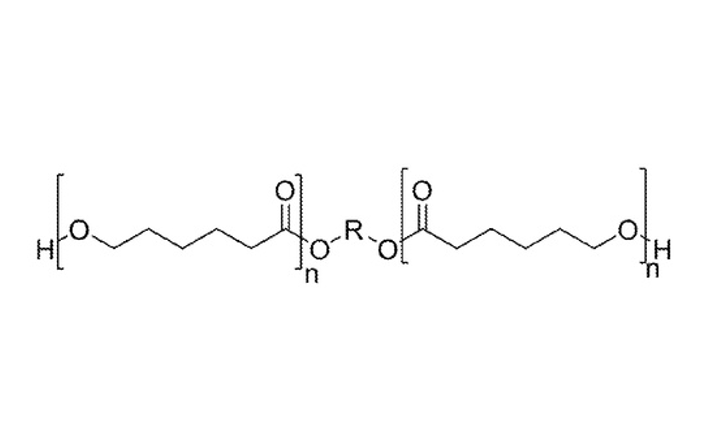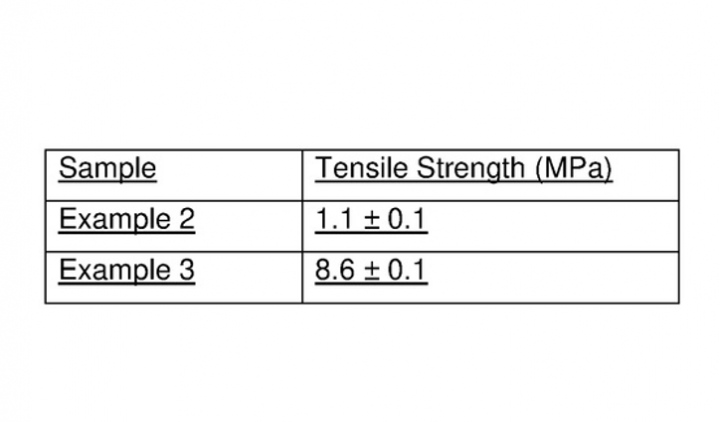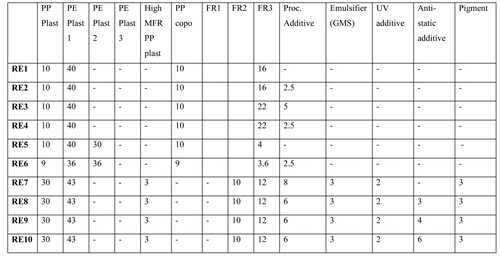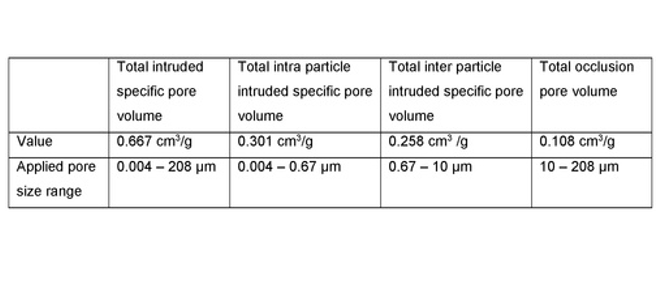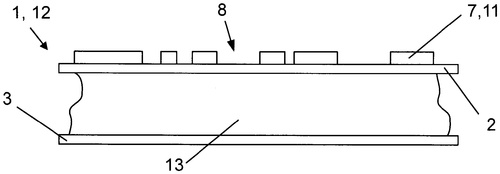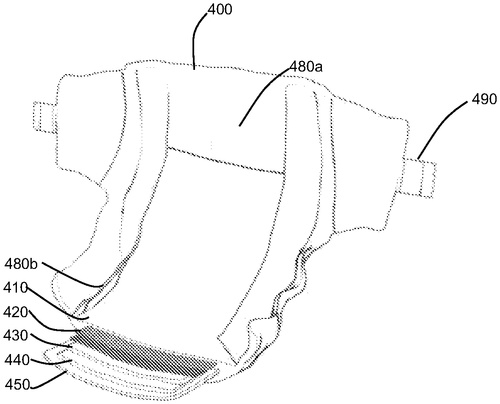Production system for a wash-resistant and antibacterial protective fabric made of different materials
Patent no: DE202021101101
Publication date: 2021-07-29
Applicant(s): TUNTEX
A manufacturing system for a wash-resistant and antibacterial protective fabric of different materials, comprising: a textile fabric finish, the textile fabric finish weaving polyester fibers and recycled polyester fibers into a surface material; a dyeing and finishing equipment, wherein the dyeing and finishing equipment is arranged behind the textile fabric equipment, and wherein the dyeing and finishing equipment further dyes and washes the surface material; a shape-fixing equipment, wherein the shape-fixing equipment is arranged behind the dyeing and finishing equipment, and wherein the dyed surface material is introduced into the shape-fixing equipment together with a water-repellent agent and dried, wherein the vapor deposition equipment is used to vapor deposit a metal on a flat release film to form a metal vapor deposition release film, such that the metal vapor deposition release film comprises a metal surface and a release film surface; a lamination equipment, wherein the lamination equipment is housed behind the mold fixture equipment and the vapor deposition equipment, so that the lamination equipment can adhere the shape fixing surface material to the metal surface of the metal vapor deposition release film and can detach the release film surface from the metal surface, wherein the roll lamination equipment is installed behind the lamination equipment such that the bonded metal vapor deposited fabric is bonded with a functional thin film to form a metal vapor deposited protective fabric; and printing equipment, wherein the printing equipment is disposed behind the lamination equipment, and wherein a printing layer can be adhered to the outer layer of the metal vapor deposited protective fabric.
Ink compositions with biodegradable polyurethane binder
Patent no: WO2021/201875
Publication date: 2021-10-07
Applicant(s): HEWLETT PACKARD DEVELOPMENT
Inventor: ZHOU ZHANG-LIN, BRANDSTEIN, YANG QIANHAN
The present disclosure sets forth ink compositions having a biodegradable polyurethane binder that can be used for textile printing. In one example, an ink composition can include water, an organic co-solvent, a colorant, and a biodegradable polyurethane binder. The biodegradable polyurethane binder can include prepolymer segments including polymerized monomers of a diisocyanate and a diol. The diol can include to terminal 6-hydroxyhexanoate groups linked by an organic linking group. Chain extenders can connect the prepolymer segments. The chain extenders can include a polymerized diamine.
Fungal mat coating method and bio-based composite materials obtained therefrom
Patent no: WO2021/245608
Publication date: 2021-12-09
Applicant(s): MOGU
Inventors: GANDIA, Antoni, CIELO, Daniele, MONTALTI, Maurizio, BABBINI, Stefano
BELOTTI, Gianluca
The present invention relates to a new family of bio-based composite materials, the method for manufacturing the same, and moreover the method for the coating of fungal mats derived from living fungal paste or slurry by using a bio polymer or resin manufactured thereby, and to the products obtained therefrom, in particular for application in the soft goods market, as for example leather, leather-like, fabrics, upholstery and textile-like products.
Flame retardant materials
Patent no: WO2021/123354
Publication date: 2021-06-24
Applicant(s): BOREALIS, AUSTRIAN
Inventors: PASTORINI MIRELA TURY, DEFOER JOHAN, EK CARL-GUSTAF, LEWIS GAVIN
The invention provides a flame retardant material comprising a substrate, an optionally corona-treated coating on the substrate, the coating comprising a polyolefin composition comprising a) an ethylene based plastomer with a density in the range of 0.857 to 0.915 g/cm3 and an MFR2 in the range 0.5 - 30 g/10 min; b) a propylene based plastomer with a density in the range of 0.860 to 0.910 g/cm3 and an MFR2 in the range 0.01 - 30 g/10 min; and c) a flame retardant, a primer layer on top of the coating and a lacquer topcoat.
Coatings comprising antimicrobial active ingredients for food packaging
Patent no: WO2021/224317
Publication date: 2021-11-11
Applicant(s): OMYA
Inventors: MONNARD FABIEN WILHELM, WALLER STEFANIE, WEIHS JAN PHILIPP, RÜEGG NADINE, FALLER ANNICA VANESSA, BECK BARBARA MARIA, YILDIRIM SELCUK, MÉNARD RICO
The present invention relates to a sheet-like element suitable for use in a food packaging, comprising a coating layer comprising surface-reacted calcium carbonate. The coating layer is adapted for being loaded with an antimicrobial active composition, such as an essential oil. The present invention further relates to a coating layer comprising surface-reacted calcium carbonate loaded with an antimicrobial active composition suitable for use in a food packaging, as well as to a process for the manufacture of said sheet-like element, a sheet-like element supply device, a food packaging comprising said sheet-like element, the use of said sheet-like element in a food packaging and the use of said sheet-like element for achieving an antimicrobial and/or antifungal and/or anti- mould and/or antifouling effect in a food packaging.
Flexible textile structure, floor component comprising a flexible textile structure, method for producing a floor component, ground line protection system and method for producing a ground line protection system, and use of
Patent no: DE102020005082
Publication date: 2021-10-14
Applicant(s): G QUADRAT GEOKUNSTSTOFFGESELLSCHAFT MBH
Inventor: SCHRÖDER JAN
The invention relates to a flexible textile structure (1) for producing a floor component (12). Such a floor component (12) has a filling material (13) which sets and/or hardens under the influence of moisture. Such floor components (12) are used in particular for protecting ground lines. According to the invention, the flexible textile structure (1) has a coating (7, 11). The coating (7, 11) is preferably self-dissolving and/or has openings (8). In both cases, it is possible for the floor component (12) to become rigid or semi-rigid as a result of penetrating moisture after installation.
Plant-based absorbent article
Patent no: US20210330519
Publication date: 2021-10-28
Applicant(s): ZERA INC
Inventors: MONROE EMILY, SAIGAL AMRITA, POCCIA JOHN, KEIGHLEY JAMES
An absorbent article, such as, for example, a diaper, that is toxin-free and made from plant-based, biobased, all natural, clean ingredients. In one embodiment, the absorbent article is a diaper made from plant-based resin, comprising: (i) a first layer, wherein the first layer is a cotton top sheet with a wax-based coating deposited on an exterior surface of the first layer (adjacent to the wearer's skin, or “user-facing”); and (ii) a second layer, wherein the second layer is an acquisition/distribution layer (ADL), and wherein the ADL is comprised of two sub-layers of different materials, a first sublayer comprising an apertured film acquisition sub-layer disposed on top of, and laminated to, a second sub-layer comprising a non-woven acquisition layer.
Textile products having selectively applied sealant or coating with visual indicator and method of detecting the same
Patent no: US20210283309
Publication date: 2021-09-16
Applicant(s): HOTHOUSE MEDICAL
Inventors: STEVENSON DAVID GRANVILLE, ASHTON TIMOTHY RAWDEN, CALCUTT LINDSEY, VAN HULLE PAUL, CURLEE JAMES WADE
A method of detecting the presence or absence of a sealant applied to a textile graft includes the steps of: providing a textile graft having a first surface and an opposed second surface; providing a water soluble masking agent; applying the water soluble masking agent to at least a portion of the first surface of the textile graft; providing a sealant solution; providing a visual indicator; applying the water insoluble sealing agent and the visual indicator to the second surface of the textile graft; and removing the water soluble masking agent after the step of applying sealing solution. The second surface has visual indication of the visual indicator and the first surface is substantially free of visual indication of the visual indicator. An implantable textile graft includes the selectively applied visual indicator.





